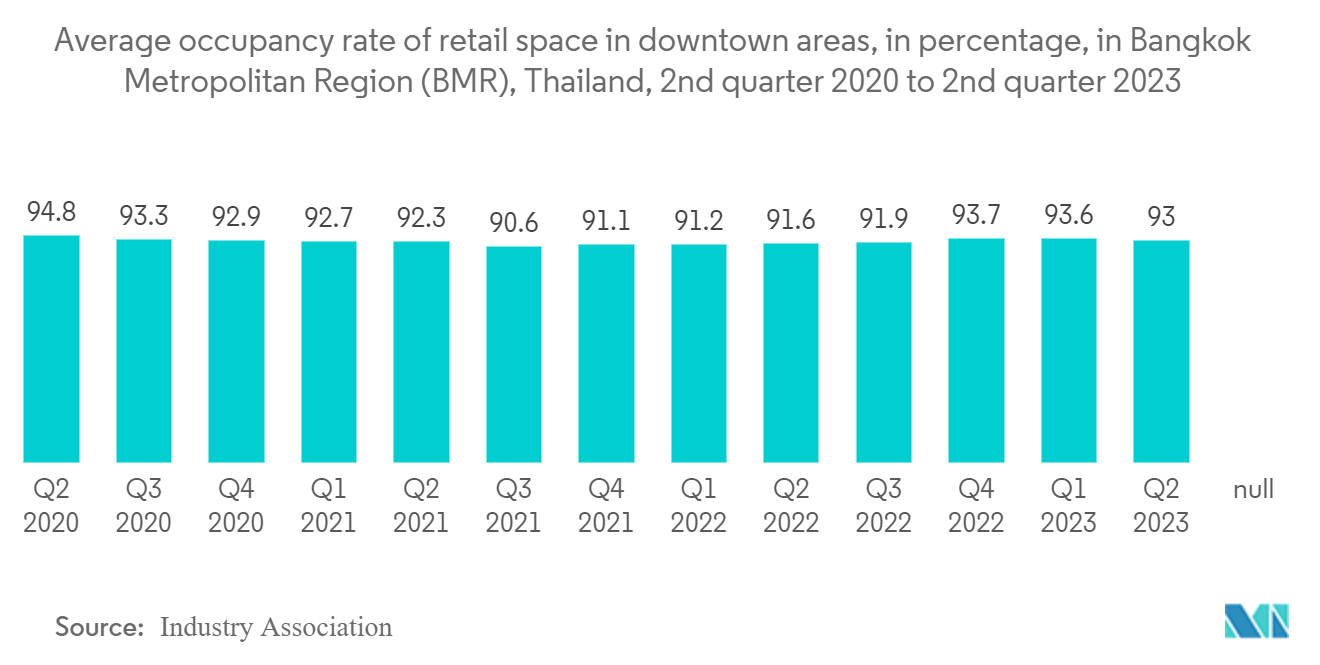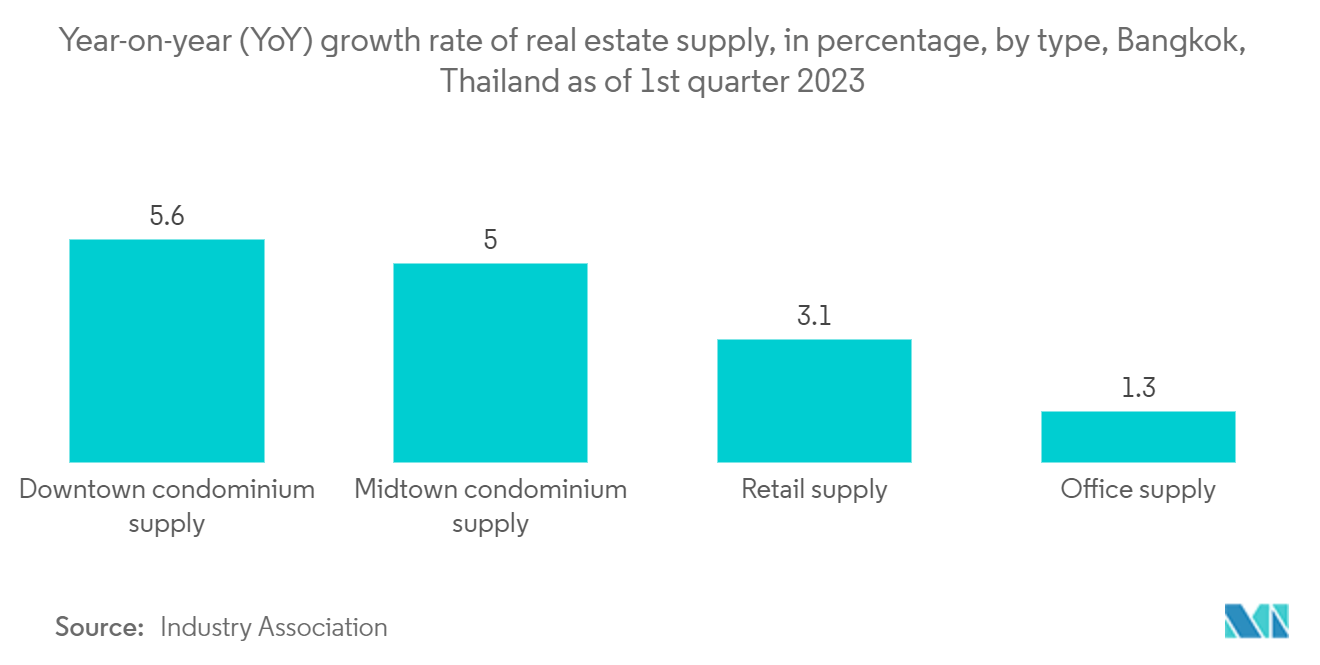Market Trends of Commercial Real Estate Industry In Thailand
Growing Demand for Retail Spaces in Thailand
The Thai retail estate sector in 2024 is poised for growth, buoyed by a notable increase in consumer sentiment. In December 2023, the Consumer Confidence Index (CCI) reached 62.0, marking its highest level since February 2020. With ongoing government stimulus initiatives and a projected rise in tourist arrivals, the retail sector is set to receive further support. The retail sector is witnessing a notable shift, with developers and retailers venturing into diverse city locales. The momentum behind shopping mall expansions, particularly community malls and retail spaces within mixed-use projects, is set to persist in 2024.
There is a rising appetite for easily accessible shopping avenues, particularly in downtown and midtown regions. Even suburban areas are witnessing a surge in shopping mall constructions, buoyed by population upswings and enhanced infrastructure. In 2023, the retail sector boasted a robust 95% occupancy rate, a trend that held across various shopping mall formats. Bangkok's retail scene is set to witness a surge in new and revamped establishments in 2024. However, this anticipated influx of supply may exert pressure on the sector's occupancy rates.

Bangkok's Office Space Driving the Market
After a challenging 2023, the Thai commercial real estate market is poised for an exciting 2024. The imminent surge in prime-grade office and retail offerings is set to grab the attention of developers, investors, and occupiers.
By the close of 2024, with seven new office projects, the total prime office supply in Bangkok's Central Business Area (CBA) is projected to hit 4,12,600 sq. m (NLA). This figure represents 27.9% of the existing prime stock, marking the highest annual supply increase since 1999. These developments pose notable challenges, particularly within the CBA submarket. The prime office pipeline is expected to inject roughly 1.5 million sq. m into the CBA submarket by the end of 2028, effectively doubling the existing prime office stock.
Amid a pronounced "flight-to-quality" trend, older commercial buildings face mounting challenges in maintaining steady rental and occupancy levels. Consequently, there is a noticeable increase in renovation and enhancement initiatives, with a growing emphasis on securing ESG certifications. These endeavors are crucial for the buildings to remain competitive despite newer developments.
Office buildings with less than a decade of age fetched a significant rental premium, averaging 22.5% higher than the CBA-wide average in Q3 of 2023. Over 10 years, even older assets underwent substantial renovations, maintaining their competitiveness and commanding a premium slightly above the average. On the other hand, office properties aged over a decade, without notable renovations, faced a discount of 8.8% below the average, with this gap expected to widen. These trends indicate the emergence of a first-mover advantage in the office market.


